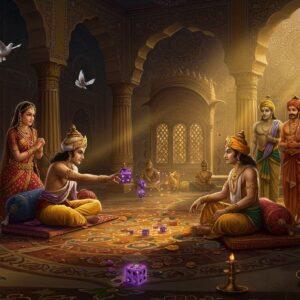
Nestled amidst the serene, iron-rich hills of Karnataka’s Bellary district is the story of Sandur, a princely state whose history is a fascinating tapestry of resilience, culture, and forward-thinking leadership. For many, its past is an enigma, a lesser-known chapter of India’s royal history. Today, let’s take a journey back in time to explore the legacy of this remarkable kingdom and understand its deep cultural significance.

The Dawn of a Maratha Dynasty
The story of Sandur State begins in 1713, founded by Sidhojirao of the Maratha Ghorpade family. This wasn’t just any family; their lineage proudly traces back to Karnasinh, a Sisodia Rajput, adding a layer of valiant heritage to their rule. The state’s very location, cradled by the Sandur hills, was a natural fortress, providing a strategic advantage that was crucial for its survival and stability in those early days.
A Kingdom Navigating Tumultuous Times
Sandur’s journey was not without its challenges. The state’s control fluctuated, a testament to the turbulent political climate of the 18th and 19th centuries. For a period between 1776 and 1790, it was annexed by the powerful Mysore Kingdom. Later, it briefly became part of the Maratha’s Dominions from October 1817 to July 1818. However, on July 1, 1818, Sandur formally became a British protectorate. This unique relationship allowed it to maintain a degree of internal autonomy while being under the Madras Presidency, a status that helped shield it from much of the era’s turmoil.
A Legacy of Progressive Leadership and Social Harmony
What truly sets Sandur apart is the visionary governance of its rulers. Long before these ideas became mainstream, the Ghorpade rulers implemented incredibly progressive policies that showcased a deep respect for human dignity and community welfare. This history of Sandur deeply influences its culture even today, fostering a spirit of unity that is cherished through local traditions and festivals.
- Championing Social Equality: In a truly remarkable move for the time, the rulers of Sandur opened places of worship to all castes and even outlawed the practice of untouchability. This fostered a sense of unity and mutual respect among its people, creating a harmonious society that valued every individual.
- Empowerment Through Education: The leadership believed in the power of knowledge and established numerous educational institutions that were accessible to all, irrespective of their social standing. This commitment to education laid the groundwork for a prosperous and enlightened populace.
This deep-rooted respect for tradition and community is something we at poojn.in hold very close to our hearts. To continue these beautiful, age-old practices, having authentic pooja essentials is key. We understand that every ritual is an emotion. That’s why we bring you a complete range of Pooja Samagri, from fragrant Sondhya Deep Agarbatti to pure, handcrafted clay items, delivered right to your doorstep with care and reverence.
The Dawn of a New Era: Integrating with Modern India
As India walked towards independence, the princely states faced a new destiny. Raja Yeshwantrao Ghorpade, understanding the changing times, signed the instrument of accession to the Dominion of India on August 10, 1947. Sandur State officially merged with the Madras Presidency in 1949. By 1953, it became a part of the Bellary District, which was transferred to Mysore State, later renamed Karnataka. The legacy of the royal family, however, did not end there. Raja Yeshwantrao’s son, M.Y. Ghorpade, continued to serve the people as a state Minister and Member of Parliament, carrying forward the family’s commitment to public life.

Echoes of Royalty: The Shivavilas Palace
Among the historical landmarks that dot this region, the Shivavilas Palace stands as a magnificent testament to Sandur’s regal past. Constructed during Maharaja Yeshwantrao Ghorpade’s rule, this architectural marvel reflects the family’s exquisite taste. Today, it has been beautifully converted into a hotel and museum, allowing visitors to step back in time and experience the grandeur of Sandur’s royal heritage firsthand.
Understanding Sandur’s Enduring Legacy
One might wonder what makes the history of Sandur State so captivating. It is this unique blend of Maratha pride, progressive reforms, and a peaceful transition into modern India that makes its story so special. The Ghorpade rulers were not just conquerors; they were builders of a society founded on respect and knowledge. This heritage is the soul of Sandur, a legacy that continues to inspire.
The rulers of Sandur State, primarily the Ghorpade family of the Maratha clan, were instrumental in shaping its unique identity. Their leadership is the reason Sandur is remembered not just for its strategic importance but for its contribution to social reform and cultural preservation, making it a truly cherished part of Karnataka’s rich and diverse history.


